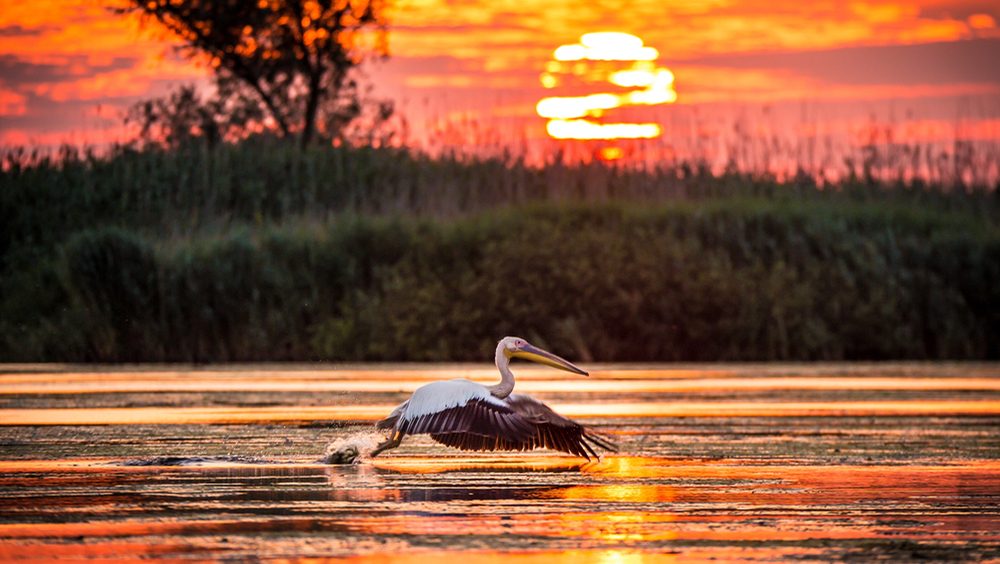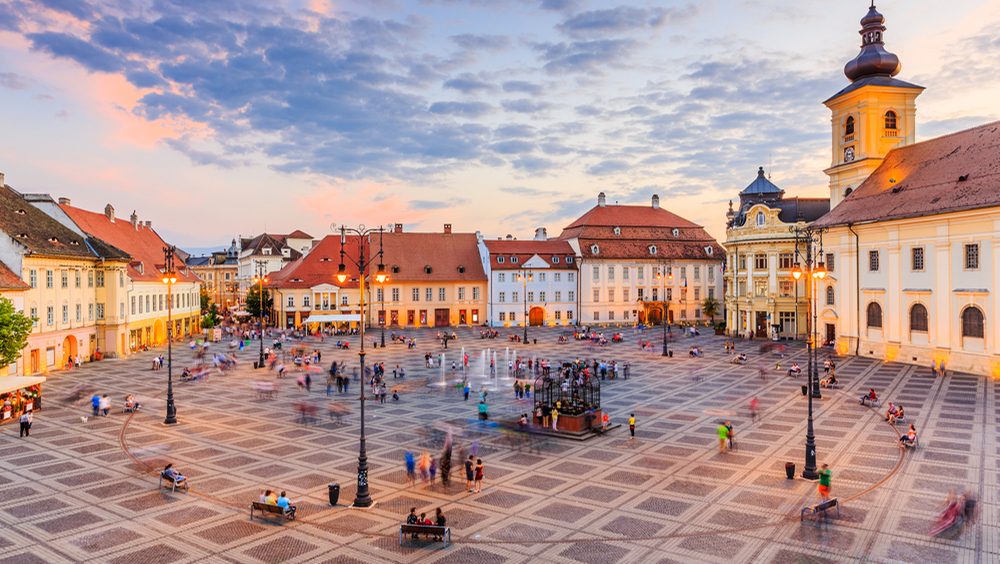Road trip through Maramureș: sights and unforgettable experiences

- Places to visit in Northern Romania
- About Maramureș tourist area – why worth exploring
- Sights in Maramureș
- Why is so special Enterprise Rent-A-Car?
Maramureș is a destination not to be missed, if you are a great lover of culture and folk costumes. This is the place where traditions are kept alive and authentic, a real oasis for both local and foreign tourists.
Whether you come alone, with family, partner or friends, you’re sure to find sights in Maramureș to delight you. What’s more, here are some activity ideas for when you’re wondering what to do in Maramureș. Discover them all below!
Places to visit in northern Romania
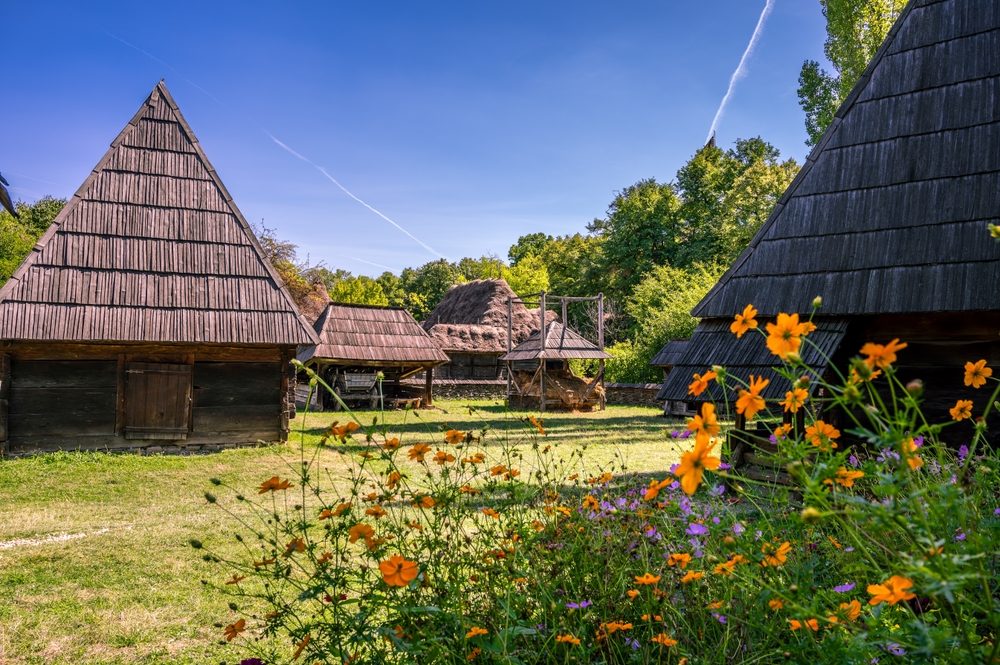
Northern Romania is a mix of wilderness blended with ancient traditions and crafts. The mountains with their soaring peaks, picturesque villages, carved wooden churches and virgin forests are just a few of the places to visit in northern Romania. Time seems to stand still and hospitality is at home. If you’re thinking of taking a road trip in this area, there are plenty of tourist attractions in Bucovina and Maramureș.
Places to visit in Bucovina – Land of (beech) forests

Bucovina or “The Land of Forests”, as the place is known, is a corner of paradise in northeastern Romania. Dressed in a cloak of beech and spruce, this region invites you to reconnect with nature and take a spiritual journey. Peaceful villages, painted monasteries, places steeped in legends and stories create a unique atmosphere full of beauty and mystery. Here are some of the sights worth seeing in Bucovina:
- The painted monasteries (Voroneț, Sucevița, Moldovița) – these monasteries have exterior murals, unique in the world. Voroneț Blue is a very special shade, which has been officially registered as a symbol of Romanian culture;
- Păltinoasa and Marginea villages – known for their hand-woven carpets and traditional pottery;
- The village of Gura Humorului – famous for its local handicrafts and fine cuisine;
- Giumalău Peak – the highest in the Bucovina Carpathian Mountains and offering great views;
- Obcina Mestecăniș Nature Reserve – a protected area with an impressive biodiversity;
- Salina Cacica – a salt mine with an impressive history, which has become an important tourist attraction.
Places to visit in Maramureș – Wood Country
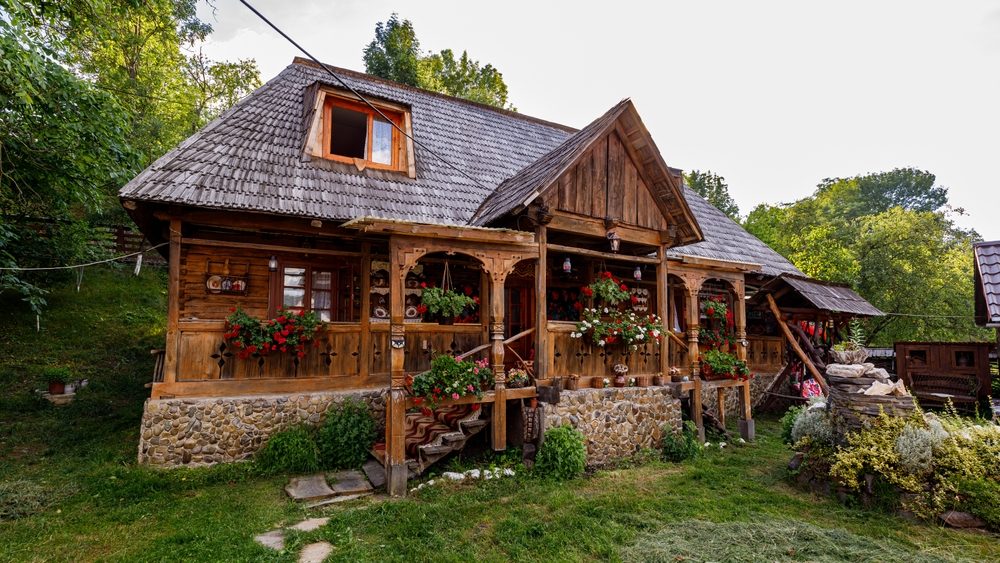
Maramureș or “The Land of Wood” is known by this name because wood is not just a building material here, but has become an essential element to create art. The best-known sights in Maramureș are the pieces carved in wood, real treasures of local culture. So what can you visit in Maramureș?
The carved gates, wooden churches, traditional houses and household objects all bear the mark of folk craftsmen who keep the centuries-old tradition alive and attract tourists from all over the country.
The fact that eight churches in Maramureș have been included in UNESCO’s world heritage list is proof of the value of wood carving. The list of tourist attractions in Maramureș under UNESCO protection includes:
- Wooden church Josani “St. Nicholas”, Budești;
- “Sfânta Paraschiva” wooden church in Desești;
- Wooden church “Nașterea Mașterea Maicii Domnului”, in Ieud Deal;
- Wooden church “Sfinții Arhangheli”, Plopiș;
- The wooden church of “The Entry of the Mother of God into the Church” in Bârsana;
- Wooden church “Sfânta Paraschiva”, in Poienile Izei;
- Wooden church “Sfinții Arhangheli”, in Rogoz;
- Wooden church in Șurdești.
A trip to Maramureș is an immersion in an authentic world, steeped in traditions intertwined with nature.
Thus, places to visit in Maramureș include wooden churches, unique villages such as Breb, Botiza, Ieud (some tourist destinations in Maramureș famous for their wood carvings), waterfalls, nature reserves and resorts (Borșa, Vișeul de Sus, Sighetu Marmației, Cavnic, Baia Sprie, Vadu Izei, etc.). Don’t forget to take with you a tourist map of Maramureș to get an overview of the places you want to visit.
About Maramureș tourist area – why it’s worth exploring
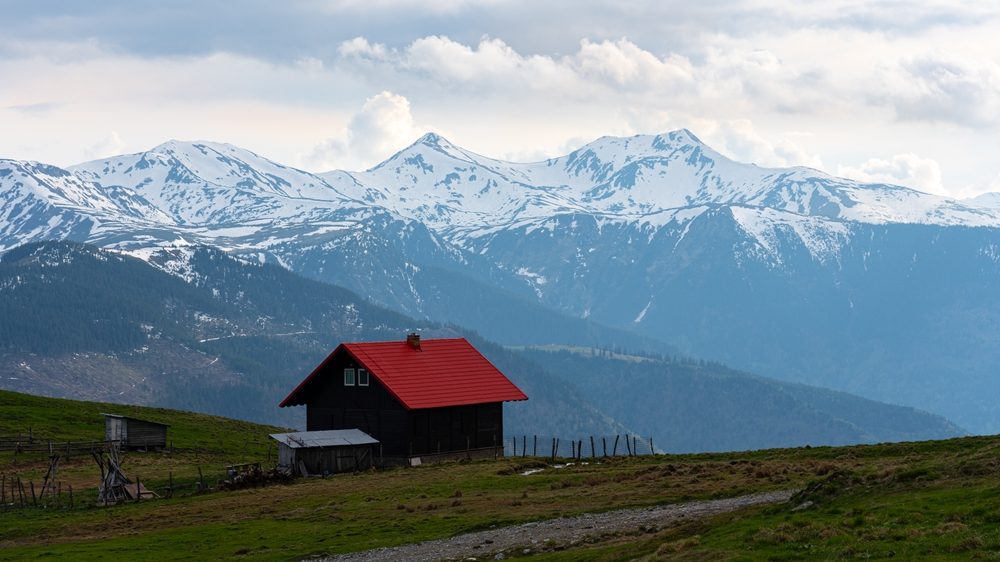
Maramureș is a fascinating region of Romania with a special charm, famous for its picturesque landscapes, traditions and warm people. In addition to sightseeing in Maramureș, you can also:
- Dream landscapes – green valleys, majestic mountains and traditional villages, for a natural landscape of breathtaking beauty;
- Traditions and customs – life in Maramureș keeps its slow pace, and the locals respect old customs and folk costumes;
- Local gastronomy – villagers prepare ancient recipes with local ingredients for a perfect taste.
When to visit Maramures?
There are vacation destinations in Maramureș whatever the season, each season offering a unique experience. In spring, nature comes to life and the landscapes of Maramureș take on a raw green hue. In summer, the days are longer and sunnier, perfect for exploring tradition-laden villages or hiking in the mountains.
In autumn, the leaves of the trees turn shades of orange, yellow and red, creating an indescribable picture. What to see in Maramureș in winter? In the frosty season, the landscape takes on a white cloak and the atmosphere becomes magical; the area is ideal for resting in snow-covered villages, enjoying local traditions and customs, and practicing winter sports. So you can visit the sights of Maramureș all year round. The condition is that you are open to what nature has to offer and the magical places you will pass through.
Where to stay in Maramureș
The question “where to stay in Maramureș” arises? The region offers a wide range of accommodation options, from modern hotels to traditional guesthouses and camping sites. If you want to visit one of Maramureș’s sights, you can stay near the area that is a priority for you, and from there drive to other areas.
You can choose to stay in the tourist area of Maramureș, in an authentic village where you can enjoy the peace and hospitality of the locals, or perhaps in a guesthouse at the foot of the mountains in a municipality such as Borșa, Vișeul de Sus, Cavnic or Poienile Izei, which offers spectacular views. For added comfort, you can stay in a hotel in cities such as Sighetu Marmației or Baia Mare.
👉 Enjoy what Maramureș has to offer by renting a car. This way, you can visit all the sights of Maramureș at your own pace, admiring the history, landscapes and traditions.
Tourist attractions in Maramureș
Maramureș is a breathtaking mosaic of landscapes: soaring mountains, deep valleys, rich forests and picturesque villages. Whether you’re looking to relax in nature, hiking or mountain biking, you’ll find a little bit of everything in Maramureș.
Discover the wealth of sights in Maramureș, from UNESCO-listed wooden churches to mountain trails offering spectacular views. Here are the most beautiful places in Maramureș, grouped by destination.
Attractions in Borșa

Borșa is located at the foot of the Rodnei Mountains and is one of the top places to visit in Maramureș. It is the perfect combination of rest and adventure. You will be charmed by the fresh air, the beautiful mountain scenery and the activities you can practice. Here’s how to spend your time in Borșa:
- Mountain hiking – mountain trails vary in difficulty, so both beginners and experienced hikers will find a suitable route;
- Mountain biking – there are numerous forest roads only good for cycling enthusiasts;
- Fishing – nearby lakes and rivers offer opportunities for sport and recreational fishing;
- Sightseeing – museums, wooden churches, waterfalls are just some of the sights in Borșa (see more, below);
- Spa – after a day in the mountains, you can relax at the spa, enjoying massages and other cosmetic treatments;
- Telegondola – the ride with the cable car offers a panoramic view of Borșa and is a unique experience for children and adults;
- Ski slope – if you are passionate about winter sports, Borșa also has ski slopes suitable for the whole family;
- Visiting nearby farms – such a visit is an excellent way to show children how certain foods (eggs, milk, etc.) are obtained;
- Creative workshops – many hostels organize pottery workshops, wood carving and other activities;
- Spiritual retreat – Borșa is a place quiet enough to reconnect with nature and yourself;
- Photography – the mountain landscapes offer excellent opportunities for nature photography.
Discover some of the sights in Borșa and how you can spend your vacation in the mountains.
Rodnei Mountains National Park
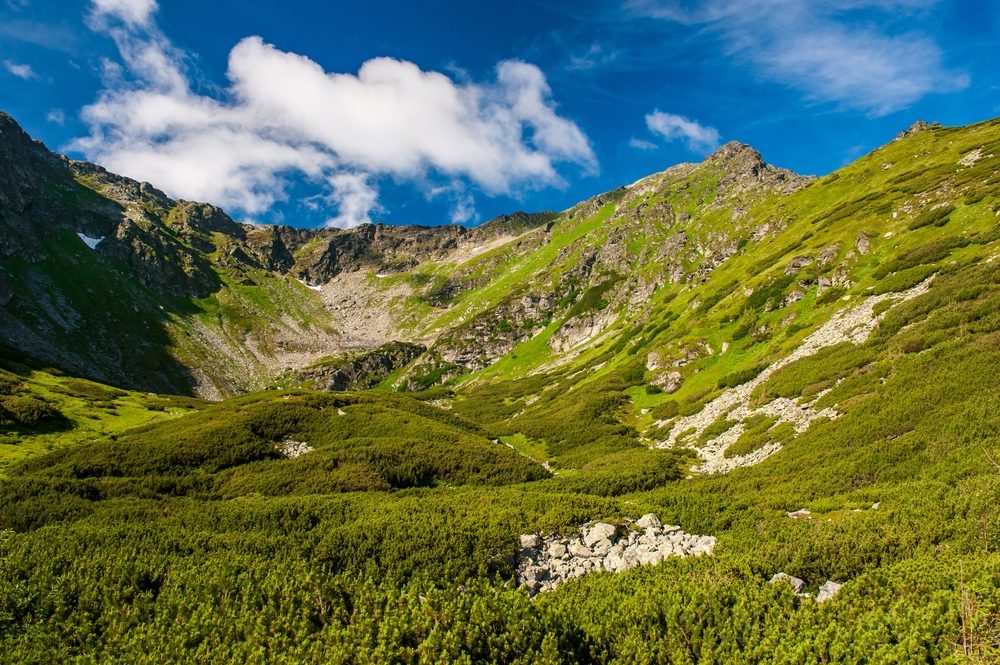
The Rodna Mountains National Park is the second largest national park (47,202 hectares) after the Domogled – Cerna Valley National Park. Here you can enjoy the wilderness on numerous mountain trails. If you’re into cycling or mountaineering, this area will delight you. The Sângeorz Băi hot springs are in the south of the park.
Equestrian tourism can also be practiced in the park, where you can ride on horseback along forest trails and meadows. Here, you can enjoy glacial lakes and glacial cauldrons as well as rare plant species (e.g. the Rodna Mountains opaea), black goat, mountain grouse or Carpathian deer. For added comfort, drive to the village of Rodna, from where you can take a short walk.

You can get there quite easily by car from Bucharest. The road starts on the A3, then continues with DN15, DJ154J, DN15A, DN17, DN17D, DN17C and DN18, in the direction of Bucharest – Ploiești – Brasov – Sighisoara – Reghin – Romuli – Moisei – Borșa.
Cailor Waterfall
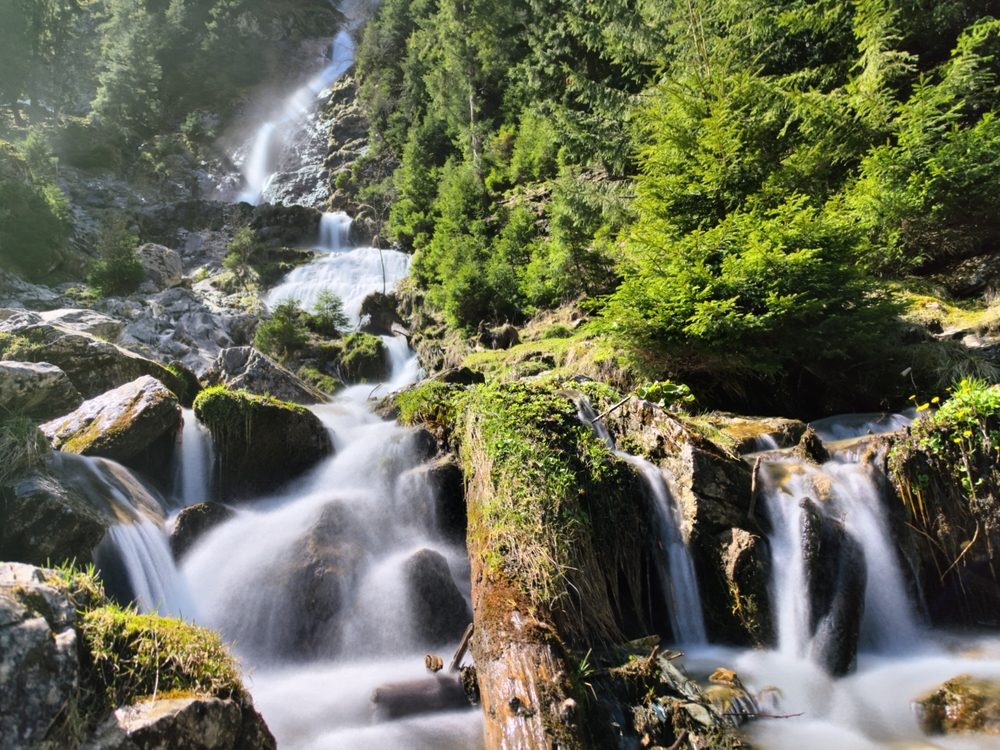
The Cailor Waterfall is located near the resort of Borșa, in the north-eastern part of the Rodna Mountains. Water from a glacial cirque flows over a limestone cliff (“Cailor Bridge”) and forms the largest waterfall in Romania.
It lies at an altitude of 1,300 meters (1,300 meters) and has a waterfall of 90 meters (300 feet). You can easily reach the Cailor Waterfall from Borșa Complex (by chairlift or on foot) or from the higher areas of Rodna.
The waterfall is about 20 km from the resort Borșa (which is different from Borșa). To shorten the drive, you can drive to Prislop Monastery and walk from there.
The walk to the Cailor Falls is a long one, but the spectacular scenery is worth the effort. From Bucharest you’ll drive on the E85, then on the DN2E, DN17 and DN18, in the direction of Bucharest – Buzău – Roman – Fălticeni – Câmpulung Moldovenesc – Cailor Waterfall.
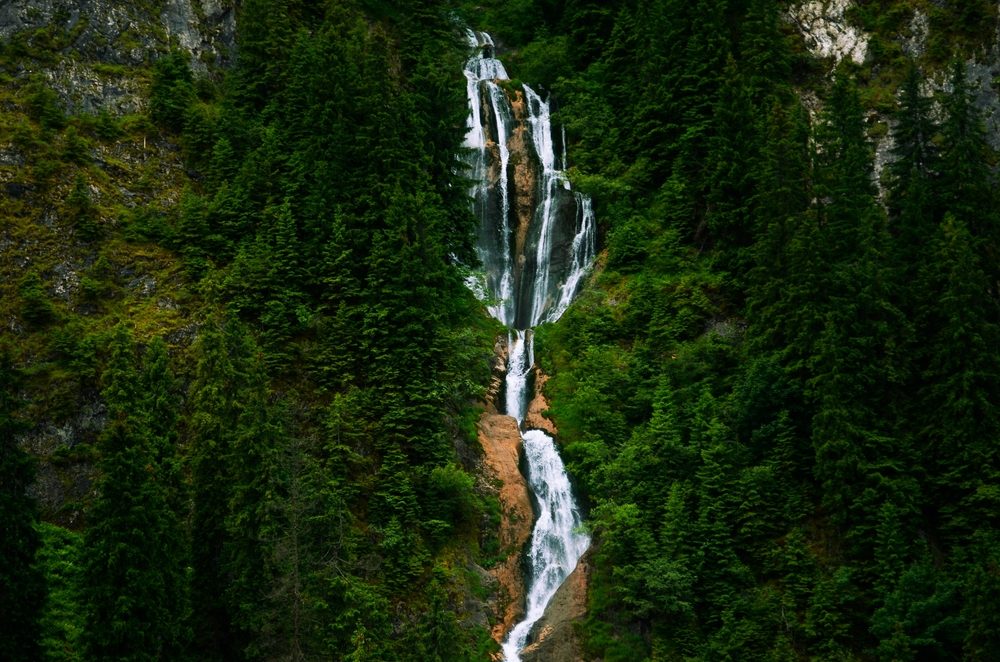
Monuments in the Vaser Valley
If you’re a fan of history books and monuments, you can also visit the Vaser Valley. Here you’ll find a chapel dedicated to Princess Elisabeth (Sissi), the Făina and Șuligu halts, the concrete bridge in Novicior, two tunnels dug in stone dating back to 1933 and the German military cemetery.
There are also galleries dating from the Second World War and tunnels dug into the rocks of the Maramureș Mountains between Baradău and Botizu. It is about 24 km from the town of Borșa.
You can reach the Vaser Valley easily enough if you drive from Bucharest. Take the A3, then the DN15, DJ154J, DN15A, DN17, DN17D, DN17C, DN18 and DJ187A, in the direction of Bucharest – Ploiești – Brasov – Târgu Mureș – Telciu – Vișeul de Sus.
Rodnei Pietrosul peak
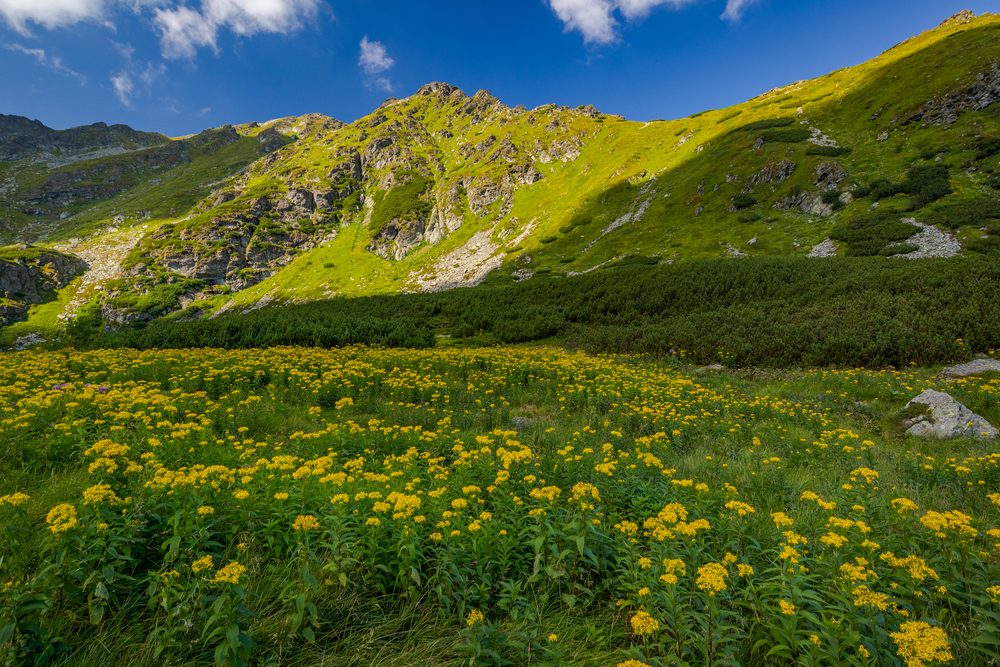
Pietrosul Rodnei is the highest peak in the Rodna Mountains and in the Eastern Carpathians, at 2,303 meters. You can reach the peak of Pietrosul Rodnei on the blue-striped hiking trail from Avram Iancu street in Borșa town to the weather station, then another 90 minutes. The route is not too difficult and can be hiked by people who do not regularly climb the mountain. The distance between Borșa and Pietrosul Rodnei is about 11 km.
You can reach Borșa at the base of the trail by car. The road starts with A3, then DN15, DJ154J, DN15A, DN17, DN17D, DN17C and DN18, in the direction of Bucharest – Ploiești – Brasov – Reghin – Moisei – Borșa.
Lake Iezer
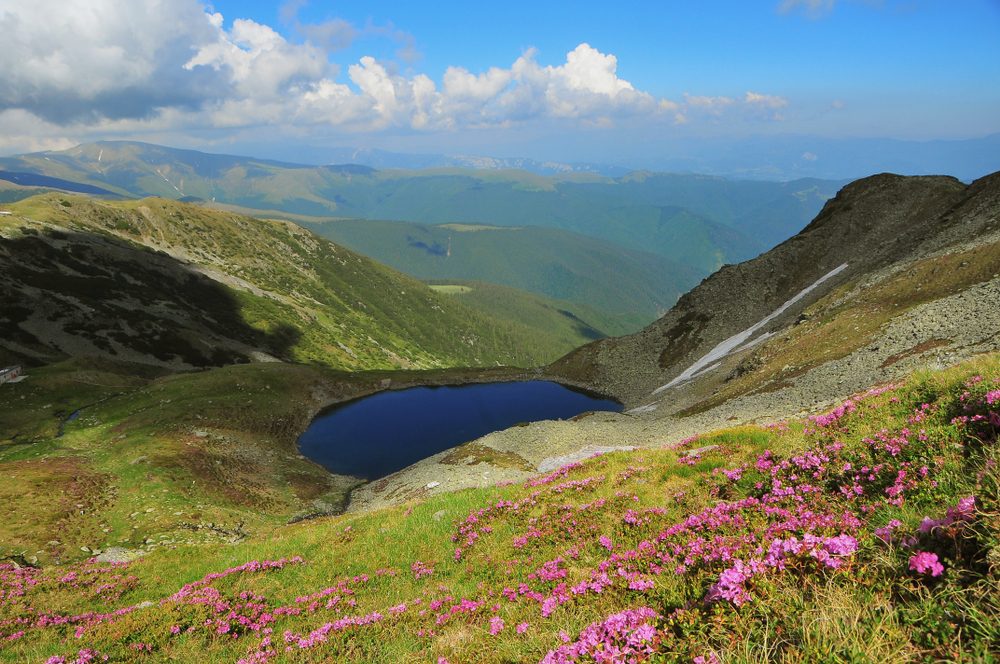
Lake Iezer is one of the few glacial lakes outside the Southern Carpathians. It has an area of 3,450 meters and a maximum depth of 2.5 meters. The lake is part of the “Pietrosu Mare” Nature Reserve and the “Pietrosu” weather station is located nearby. The area is surrounded by jnepen forest and there are good camping sites. The scenery is very special. The glacial heath is guarded by wild peaks and you can also see a panoramic view of Borșa.
If you want to get here, it’s about 9 km, of which 4 km can be covered by car.
The road from Bucharest starts on the A3, then the DN15, DJ154J, DN15A, DN17, DN17D, DN17C and DN18, in the direction of Bucharest – Brasov – Sighisoara – Reghin – Romuli – Borșa.
Wooden Church of Saints Archangels Michael and Gabriel

The church in Borșa is a historical monument dating from 1700. It is built in the traditional Maramureșean style and the interior painting dates from the second half of the 18th century and was made by anonymous craftsmen. It is about 15 minutes walk from the center of Borșa.
You can reach Borșa from Bucharest, starting on the A3 highway, then on the DN15, DJ154J, DN15A, DN17, DN17D, DN17C and DN18, in the direction Bucharest – Ploiești – Sighișoara – Moisei – Borșa.
👉 Get a €25 discount on your next rental by subscribing to the Enterprise Romania newsletter.
Attractions in Cavnic
The town of Cavnic has a rich history and offers a wealth of tourist opportunities, from relaxing in spas to adventures in nature. Located at the foothills of the Gutâi Mountains, Cavnic will win you over with its picturesque landscapes and strong air. Here are some of the activities you can do in and around Cavnic:
- Visit the Mining Museum – Cavnic is known for its mining tradition, and the local museum offers a journey into the history of this industry;
- Mountain hiking in the Gutâi Mountains – perfect for nature lovers;
- Mountain biking;
- Fishing – nearby lakes are rich in fish and offer amateur anglers moments of relaxation and satisfaction;
- Wild berry and/or mushroom picking – in the warm season, you can combine the joy of walking in the forest with picking the most showy fruits or mushrooms;
- Adventure park – an ideal destination for families with children. It is 180 meters long and offers an unusual walk through the trees;
- Meditation and yoga sessions;
- Folklore festivals or traditional fairs.
In addition to the above activities, there are many tourist attractions in Cavnic. Here are the most interesting ones.
Tatar Pillar
The Tartars’ Pillar (Tartars’ Stone or Written Stone) is a historical monument marking the place where the Tartars penetrated in 1717. The locals, helped by peasants from the surrounding area, thwarted the invaders.
A stone obelisk, 7.2 meters high, was erected to commemorate their resistance. It still bears the Latin inscription “Anno 1717 usque hic hic fuerunt tartari”, meaning “In the year 1717, the Tartars reached here”. It is about a 10-minute walk from the center of Cavnic.
You can easily reach Cavnic by car. From Bucharest, follow A3, then DN15E, DN16, DJ109C, DN1C, DJ109F, DN18B, DJ182C, DJ184, in the direction Bucharest – Ploiești – Rupea – Sighișoara – Târgu Lăpuș – Cavnic.
Ocna Șugatag
Ocna Șugatag is a special spa resort with mineral waters and therapeutic mud. It is an excellent opportunity to relax after a few days hiking in the mountains. Spectacular mountain scenery and Maramure-style houses are nearby. The village of Breb was popularized by King Charles, who restored several houses in the village.
👉 Post pictures of the authentic villages of Ocna Șugatag on Instagram and give us TAG, so we can enjoy the beautiful landscapes of your road trips with you.
Attractions in Târgu Lăpuș
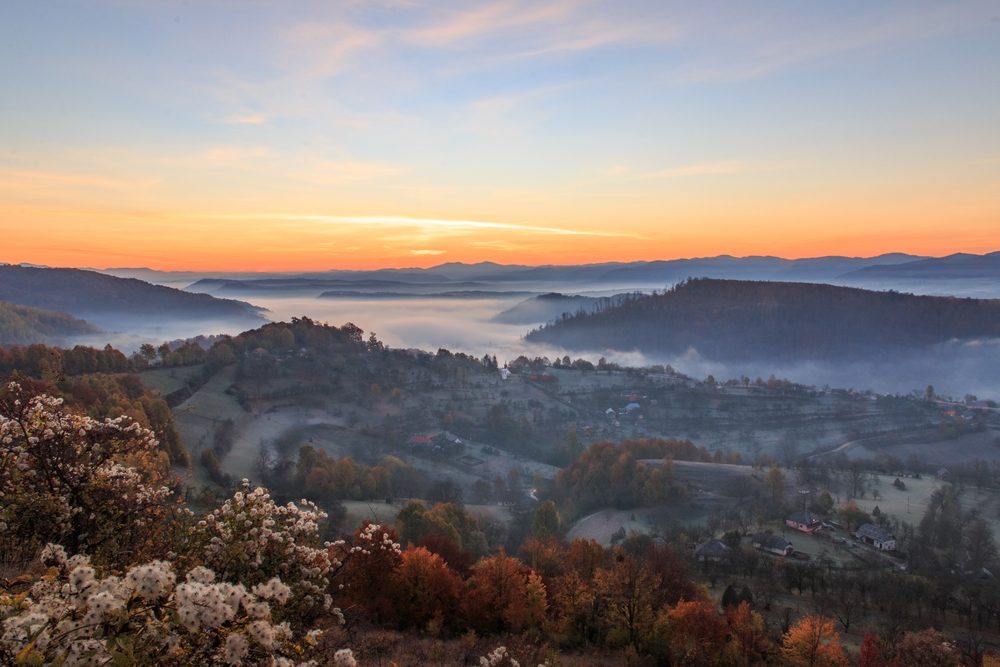
Târgu Lăpuș is the central area of the Lăpușului Country, a region of Maramureș that invites you to a journey through time and nature. With a rich centuries-long history, the town proudly preserves its historical monuments and wooden churches, true jewels of local architecture. What’s more, the spectacular mountain scenery and surrounding villages offer an authentic atmosphere, perfect if you’re looking for peace and nature. Here are some activities in and around Târgu Lăpuș:
- Visiting the wooden churches – in the locality and neighboring areas there are several wooden churches, treasures of Romanian folk architecture;
- Museum of ethnography and history – you can discover the traditions and history of Maramureș;
- Mountain hiking in the Gutâi Mountains;
- Mountain biking;
- Outdoor play – children can play outdoors, running, making sandcastles or looking for treasures.
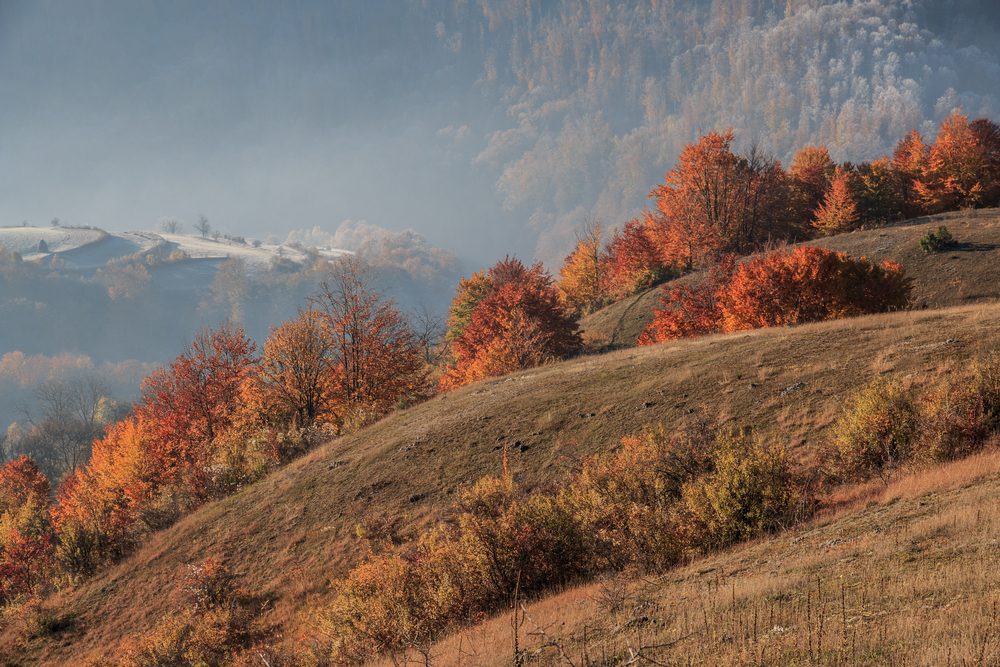
Spectacular mountain scenery, pristine forests and crystal-clear rivers give you the opportunity to enjoy hiking, mountain biking, fishing or simply a peaceful walk. Discover below some tourist attractions that will help you explore the beauty of the area and relax away from the hustle and bustle of the city.
Rohia Monastery Museum Collection
If you are passionate about history or the history of religion, you can drop by Rohia Monastery to see the museum collection. Here you can visit Nicolae Steinhardt’s cell, the library and the museum, as well as books such as the Romanian Book of Instruction of Metropolitan Varlaam (1642), the New Testament of Balgrad (1648) or the Gospel printed by Antim Ivireanu in Snagov (1697).
In addition to old documents (over 100 copies) and icons on wood and glass, you can also see the wooden church. The museum and wooden church are located in the village of Rohia, about 9.5 km from Târgu Lăpuș.
You can reach Târgu Lăpuș by car. From Bucharest follow the A3, then DN15E, DN16, DJ109C, DN1C, DJ109F, in the direction of Bucharest – Ploiești – Brasov – Sighisoara – Dej – Târgu Lăpuș.
Museum of Ethnography and the Șerban Nicolae sculpture collection
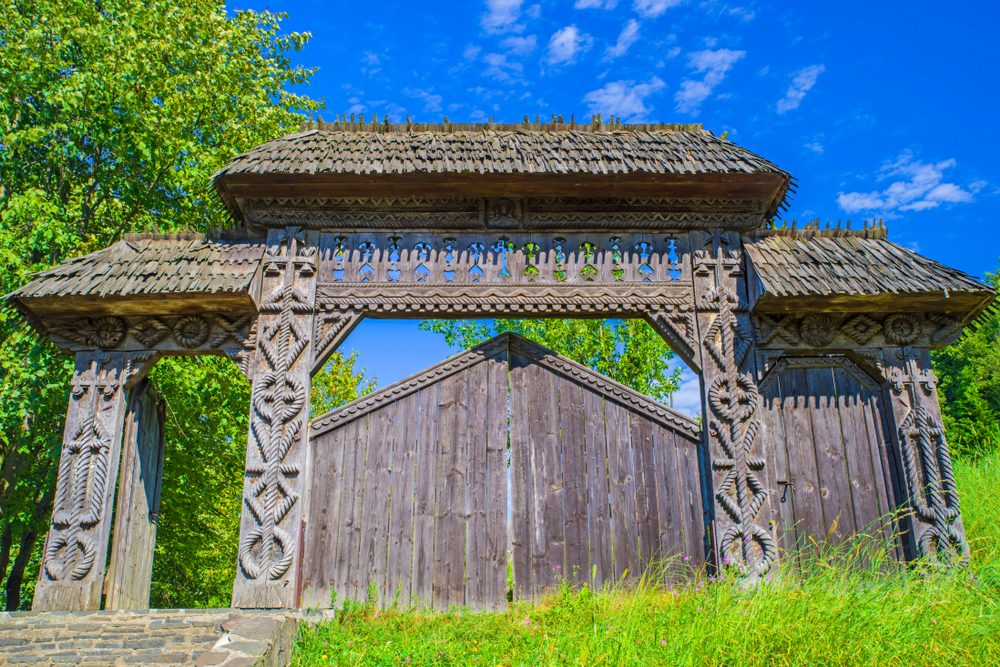
Șerban Nicolae is a well known sculptor from Maramure who has opened his home to visitors. Visit his impressive collection of wooden sculptures, bas-reliefs, pillars, masks and household objects for a journey into the world of folk art. The village of Rogoz, where you’ll find the museum open, is about 6.9 km from Târgu Lăpuș.
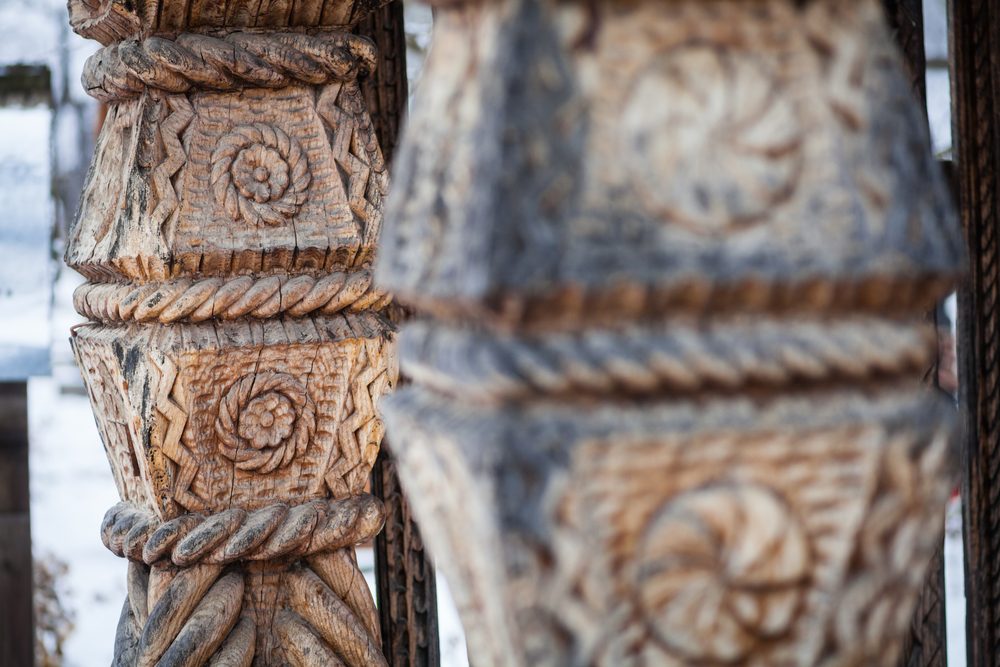
To get to the village of Rogoz by car, take the A3, then follow DN15E, DN16, DJ109C, DN1C, DJ109F, in the direction Bucharest – Brasov – Dej – Targu Lăpuș – Rogoz.
Șatra Piedmont
The Piemont (also called Șatra Pintii) has an altitude of 1,041 meters and emerges like a spur from the Lăpușului Mountains. It has an unusual trapezoidal shape, resembling the trunk of a pyramid or a ziggurat, and appears more walled than naturally formed. Despite its shape, the mountain was formed by several volcanic eruptions.
If you’re in the area, you can also visit a cave more than 30 meters deep (Avenul din Custura Șetrii), and nearby is the Pintii Cave. The cave is said to have been the hiding place of the Sikhs or perhaps a place of worship in Dacian times. It is about 14.3 km from Târgu Lăpuș.
You can reach Târgu Lăpuș quite easily by car. From Bucharest follow the A3, then DN15E, DN16, DJ109C, DN1C, DJ109F, in the direction Bucharest – Ploiești – Sighișoara – Dej – Târgu Lăpuș.
Attractions in Șomcuta Mare
Șomcuta Mare is a picturesque little town in Maramureș, which is home to several tourist attractions in the area. Here are some activities you can do in or near Șomcuta Mare:
- Visiting the Wooden Church – a jewel of Maramureș architecture that should not be missed if you come through these parts;
- The town museum – to learn more about the history of the town and the area;
- Mountain hiking – of interest is the route Șomcuta Mare – Vălenii Șomcutei – Valea Rea Cave (1350 m), to see spectacular scenery in the Gutâi Mountains and to test your fitness;
- Mountain biking – for cycling enthusiasts, there are forest roads only good to try;
- Nature walks – in the city surroundings;
- Traditional craft workshops;
- Local cuisine.
From mysterious caves and protected nature reserves to historical monuments and local traditions, the city and its surroundings offer a unique experience for nature lovers, culture and history buffs alike. Discover below some of the most important sights in Șomcuta Mare and let yourself be charmed by the charm of this special area.
Vălenii Șomcutei Cave
The Vălenii Șomcutei Cave is one of the most recently discovered caves, being declared a protected natural area only in 1977. Young limestones and ceramic fragments dating back to the 2nd millennium BC are found here.
Their presence is thought to be explained by an ancient ritual. In addition to these, the cave also contains galleries, marmite caves and a permanently flowing underground stream. There are two archaeological sites nearby: the archaeological site “Stefan’s Valley” and the archaeological site “Ograda Budenilor”.
The Vălenii Șomcutei Cave is about 7.6 km from Șomcuta Mare, which is easily reachable by car. From Bucharest, follow the A3, then the DJ108A, DJ182B and Spitalului Street, in the direction of Bucharest – Ploiești – Brasov – Sighisoara – Turda – Șomcuta Mare.
Chioarului Country

Țara Chioarului is a famous historical and ethnographic area, named after the Chioarului Fortress, an ancient fortification on the Lapus River. The area offers a mix of green pastures and dark-blue, thatched peasant houses. As well as the easy hiking you can do around here, you can learn about local crafts and folklore. About 31 km from Șomcuta Mare.

Tourist attractions in Sighetu Marmației
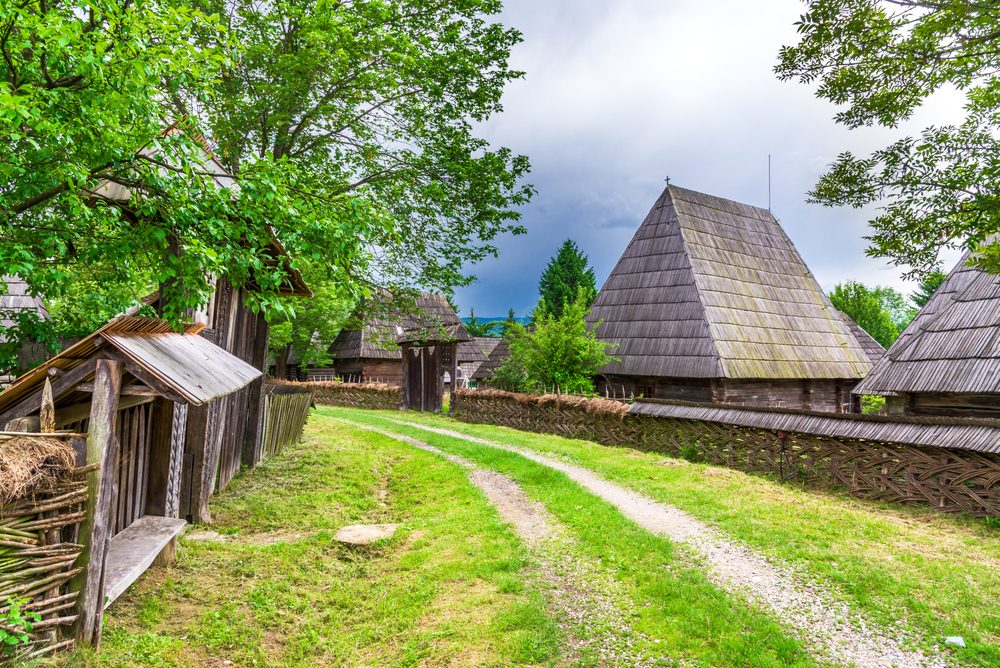
Sighetu Marmației is the answer for many who think, before their vacation, “Where to go in Maramureș?”. Sighetu Marmației is a gateway to the heart of Maramureș and harmoniously blends its rich past with the flourishing present. The city with centuries of history hides architectural treasures and museums preserving testimonies of special events in history. From old manor houses to wooden churches, every corner of the city tells a story and invites tourists to travel back in time. Here are a few things to do in Sighetu Marmației:
- Visit the County Museum of Ethnography and History – to discover the traditions and history of the place;
- Memorial to Victims of Communism and Resistance – a place to reflect and learn about Romania’s recent history;
- Wooden churches in and around Sighetul Marmației;
- Walks in the park;
- Discovering local customs and traditions;
- Mountain hiking.
In addition to the above recreational and educational activities, you can also enjoy the sights in and around Sighetu Marmației.
Museum of the Maramuresan Village
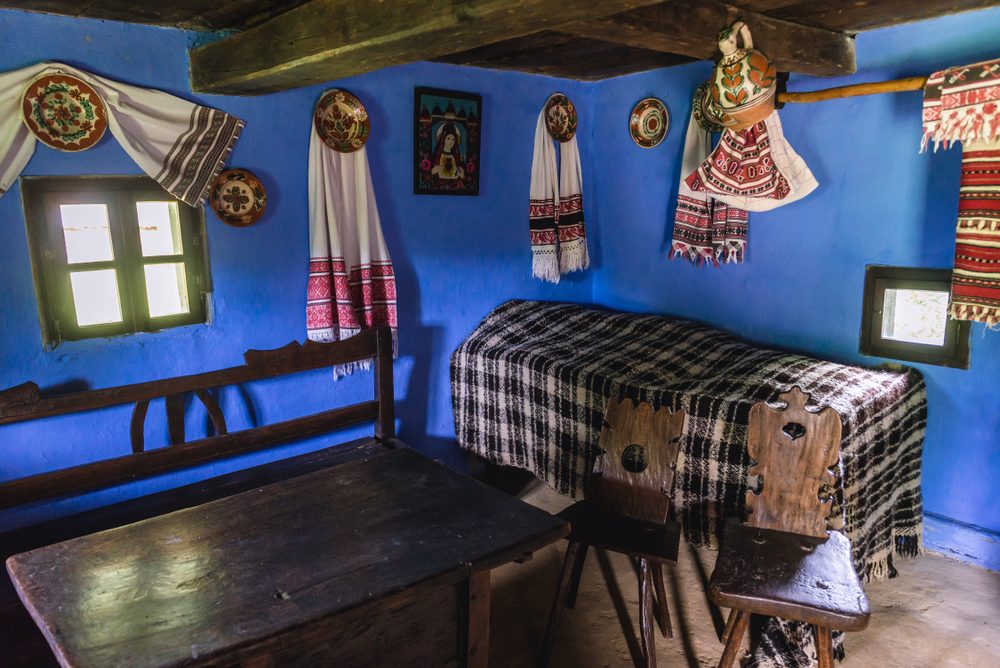
If you want to discover what life was like in the past, you have to visit the Museum of the Maramureșean Village. Here you’ll see over 30 households, some of them fully furnished with original pieces from the sub-areas of historical Maramureș, namely Cosău-Mara, Lower Iza up to Strâmtura, Middle Iza, Vișeu-Borșa, Tisa and the Ruscovei basin. Next to the Romanian households there is a Ukrainian, a Hungarian and two Jewish houses. It is about 3.5 km from the center of Sighetu Marmației.
You can reach Sighetul Marmației by car from Bucharest. Take the A3, then the DN15, DJ154J, DN15A, DN17, DN17C, DJ186, in the direction of Bucharest – Ploiești – Brasov – Târgu Mureș – Telciu – Săliștea de Sus – Vadu Izei – Sighetu Marmației.
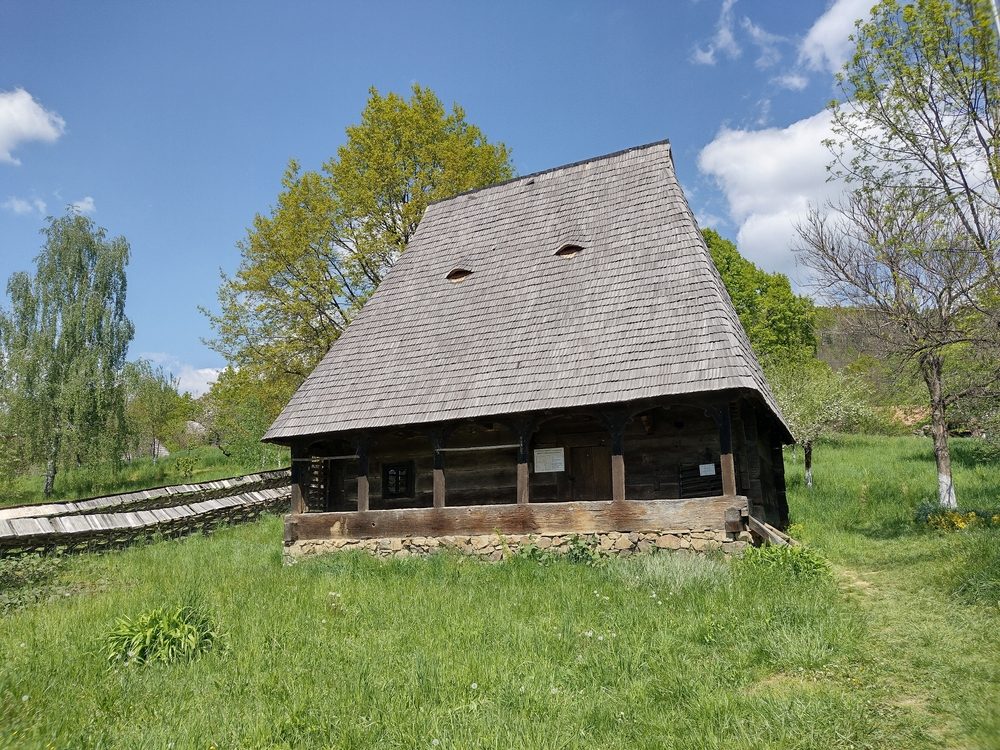
Museum of Jewish Culture
The Museum of Jewish Culture in Sighetu Marmației also includes an exhibition dedicated to the Nobel Peace Prize laureate: Elie Wiesel. It includes period furniture belonging to local Jewish families, household objects, photographs and documents from the war. It is about 500 meters from the city center.
You can get to Sighetu Marmației by car from Bucharest, following the A3, DN15, DJ154J, DN15A, DN17, DN17C, DJ186, in the direction Bucharest – Brasov – Telciu – Săliștea de Sus – Vadu Izei – Sighetu Marmației.
Vasile Kazar Memorial House
The painter’s memorial house includes objects dating back to the 18th century, including traditional local clothing. It is built of round oak beams, a rarity in the architecture of the Maramure region, but has a rural floor plan comprising the room, the awning, the pantry and the porch with pillars and arches. It is located about 1 km from Sighetu Marmației, in the commune of Vadu Izei.
How to get to Vadu Izei by car. Starting from Bucharest, take the A3, then the DN15, DJ154J, DN15A, DN17, DN17C and DJ186, in the direction Bucharest – Brasov – Targu Mures – Reghin – Bârsana – Vadu Izei.
The Merry Cemetery in Săpânța
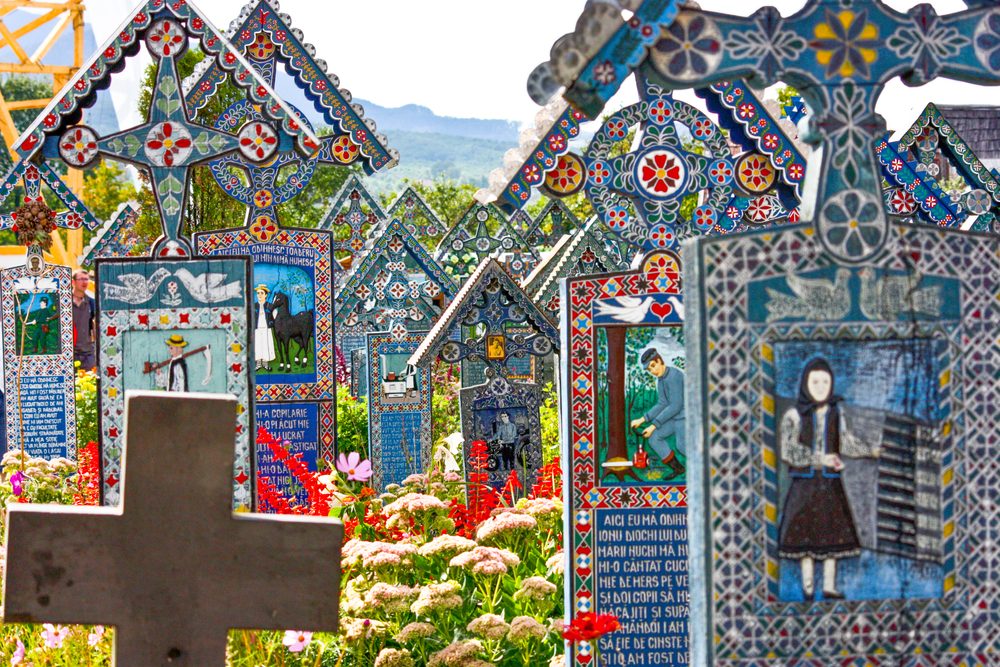
The Merry Cemetery of Săpânța is one of the most famous tourist attractions in Maramureș and a totally unique place. It is located in Săpânța, about 20 km from Sighetu Marmației, and includes brightly colored crosses, naive paintings and humorous little couplets about the lives of the deceased.
From Bucharest, you can reach the Merry Cemetery of Săpânța, if you follow the A3, DN15, DJ154J, DN15A, DN17, DN17C, DJ189 and DN18, in the direction Bucharest – Ploiești – Brasov – Reghin – Sighetu Marmației – Săpânța.
👉 Want to rent a car for your vacation in Maramureș? Choose Enterprise Romania and read our 5 tips for renting a car.
Attractions in Vișeu de Sus
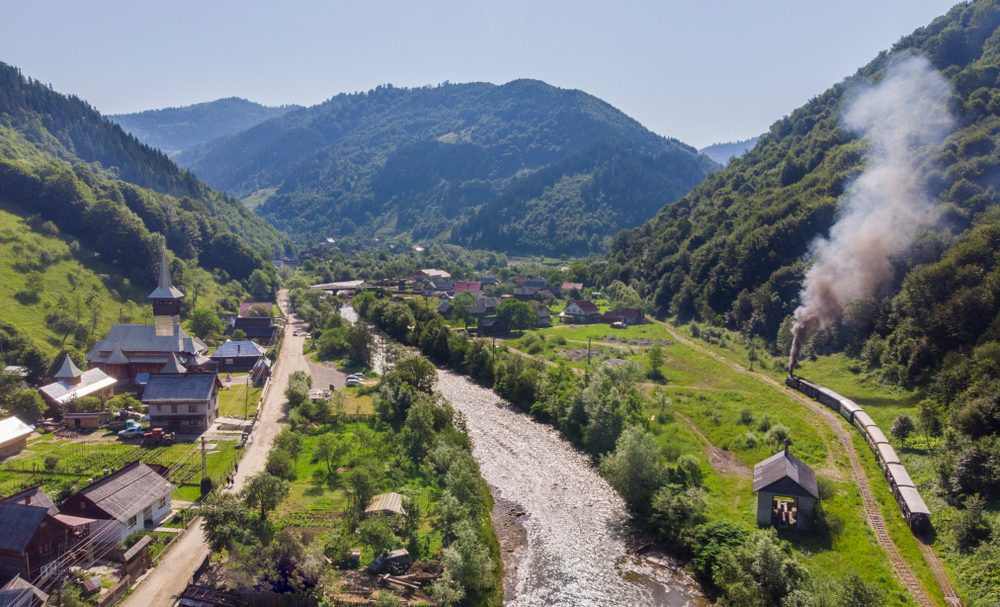
Vișeu de Sus is a dream destination and one of the most beautiful places in Maramureș, perfect for those who love nature and mountain adventures. The main attraction of the area is without a doubt the Mocănița, a steam train that winds its way up the serpentines of the Vaser Valley. As well as this technical marvel still in operation, Vișeul de Sus enchants with wooden churches, museums, craft workshops and fairytale mountain landscapes. Here are a few things to do in Vișeu de Sus:
- Sightseeing on the Sleigh – especially delightful for children, but also for adults, with the beautiful scenery;
- Walks in the parks in and around the town;
- Exhibitions and fairs of traditional objects from Maramureș;
- Visiting the wooden churches;
- Mountain hiking in the Maramureș Mountains, with trails of varying difficulty, from beginner to expert;
- Various sports competitions, folklore festivals and cultural events.
Vișeu de Sus has many tourist attractions to offer to the curious and those passionate about history, architecture or nature lovers. Here are some of the tourist attractions of Vișeu de Sus and its surroundings.
The Vișeu Sledge

A trip on the Vaser Valley is a memorable experience. The railway was built in the 1930s and is 56 km long. It starts at an altitude of 600 meters in Vișeu de Sus and goes up to 1,100 meters in the Comanu area.
Today, the route is used for tourism as well as to transport wood or other industrial products. The touristic mountaineer runs from May to October and reaches the tourist resort of Paltin, where there is also a picnic area. It leaves from Vișeu de Sus train station.
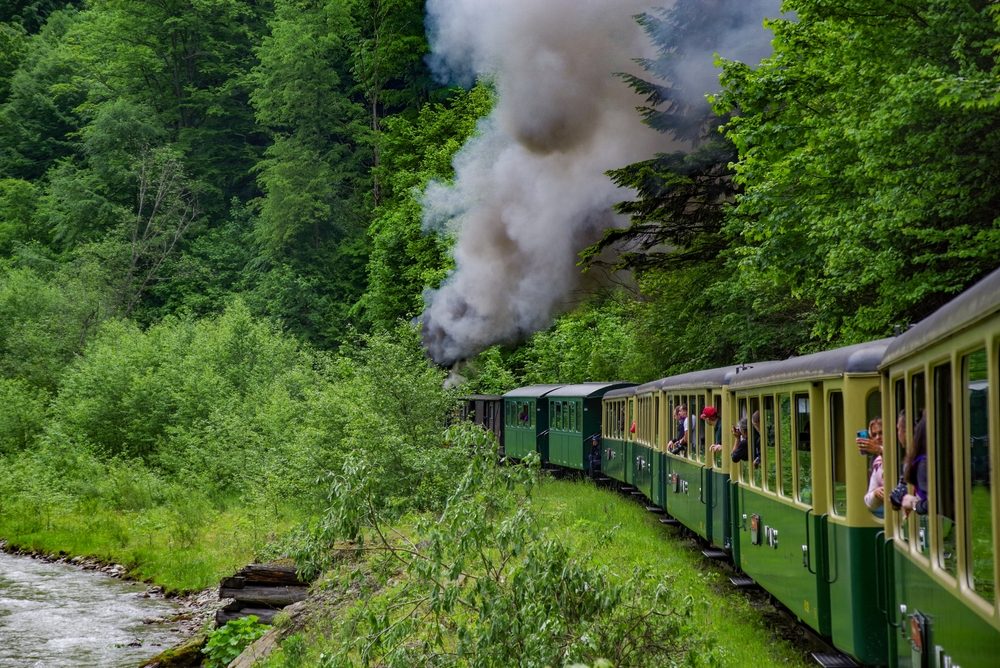
You can reach Vișeu de Sus by car. The road starts in Bucharest and passes on A3, DN15, DJ154J, DN15A, DN17, DN17C and DN18, in the direction Bucharest – Ploiești – Brasov – Targu Mures – Vișeu de Sus.
Romanian Peasant Museum

The Romanian Peasant Museum is the first museum in the country dedicated exclusively to women. It includes exhibits of women’s occupations throughout their lives, including flax and hemp weaving and weaving. Plus household objects and traditional tools. The house in which the museum is housed dates back to 1721, which complements the authentic look. It is located in the village of Dragomirești, about 23 km from Vișeu de Sus.
You can reach Dragomirești quite easily by car from Bucharest. The road starts on the A3 and continues with DN15, DJ154J, DN15A, DN17, DN17C and DJ186, in the direction of Bucharest – Ploiești – Brasov – Târgu Mureș – Vișeu de Sus – Dragomirești.
Wine Valley
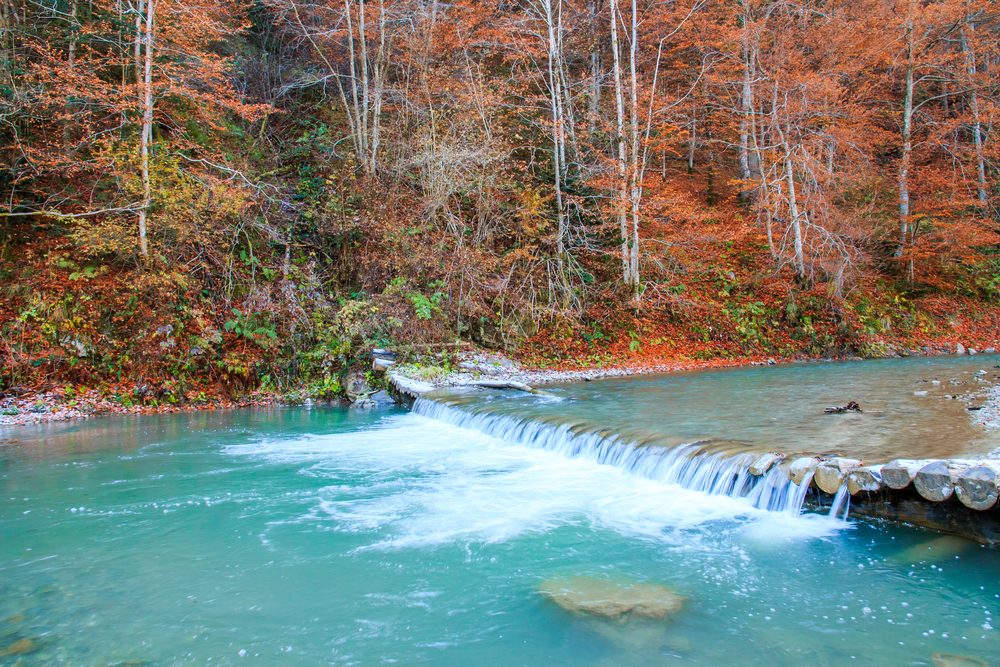
The Wine Valley area takes its name from the nearby river. There are mineral water springs here, indicating former volcanic activity, and the Vines corridors are an important circulation area.
To the east are low mountains, which allow easy mountain trails, suitable even for children. Also to the east is the Vissel Ridge and nearby, the Vissel flows into the Tisza. The Wine Valley brings together beautiful landscapes, picturesque villages and welcoming people, an ideal combination for a vacation in Maramureș. It is about 6 km from Vișeu de Sus.
You can reach Vișeu de Sus easily from Bucharest. The road starts on the A3 and continues with DN15, DJ154J, DN15A, DN17, DN17C and DN18, in the direction of Bucharest – Ploiești – Brasov – Targu Mures – Vișeul de Sus.
Blue Spring of Izei Cave and Spring
The Blue Spring of Izei cave and spring are protected areas and are part of the Rodna Mountains National Park. It covers an area of over 100 hectares and lies under the Muncelul Râios pasture. The cave is 2,500 meters long and consists of crystalline schist and limestone areas. The spring through which water gushes to the surface has a special color, which attracts tourists year after year. It is about 21 km from Vișeu de Sus.
You can reach Vișeu de Sus by taking the A3 highway and continuing on the DN15, DJ154J, DN15A, DN17, DN17C and DN18, in the direction Bucharest – Ploiești – Târgu Mureș – Vișeu de Sus.
Wooden churches
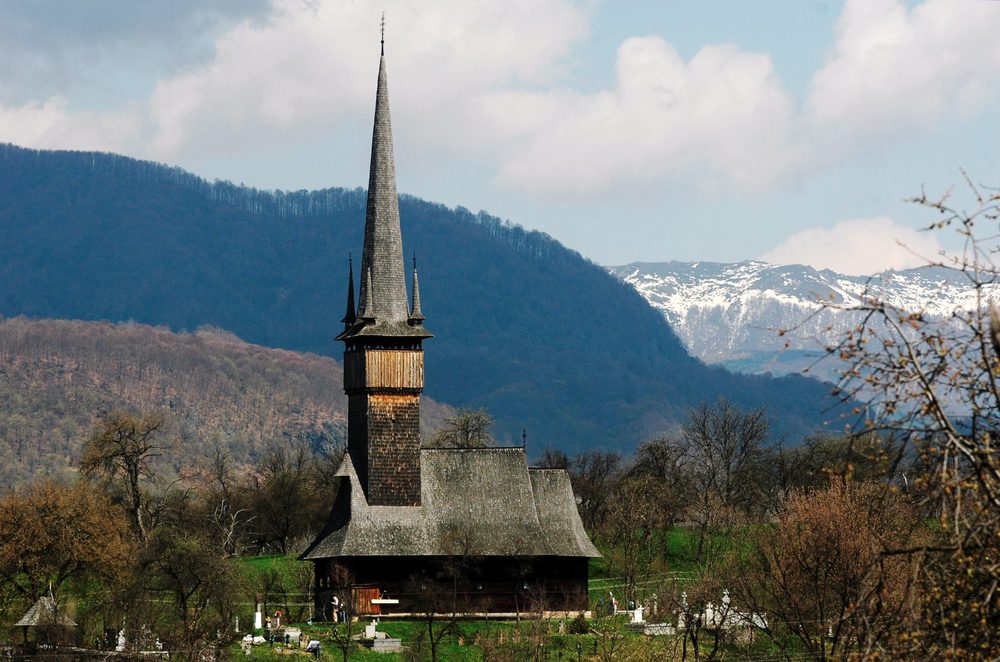
The wooden churches in the Vișeu de Sus area are remarkable for their construction. First of all, the craftsmen from Maramureș developed a special technique for joining the wood without using nails or other metal elements. This has contributed to the remarkable strength and aesthetic appeal.
These are complemented by mural paintings depicting biblical scenes and motifs specific to the area. These churches attract tourists from all over the world and inspire artists, photographers and writers.

You will get to Vișeu de Sus by taking the A3, then the DN15, DJ154J, DN15A, DN17, DN17C and DN18, in the direction Bucharest – Brasov – Targu Mures – Vișeu de Sus.
Lake Răstoaca
Lake Răstoaca is located in the village of Petrova in Maramureș. It is famous for the fact that the water does not freeze, but stays at an average temperature of 10 degrees Celsius. Legend has it that the lake was struck by lightning so powerful that the water gushed out. It is about 26 km from Viseu de Sus.
You can reach Vișeu de Sus quite easily by car. Take the A3, and from there the DN15, DJ154J, DN15A, DN17, DN17C and DN18, in the direction of Bucharest – Ploiești – Târgu Mureș – Vișeu de Sus.
Attractions in Baia Sprie
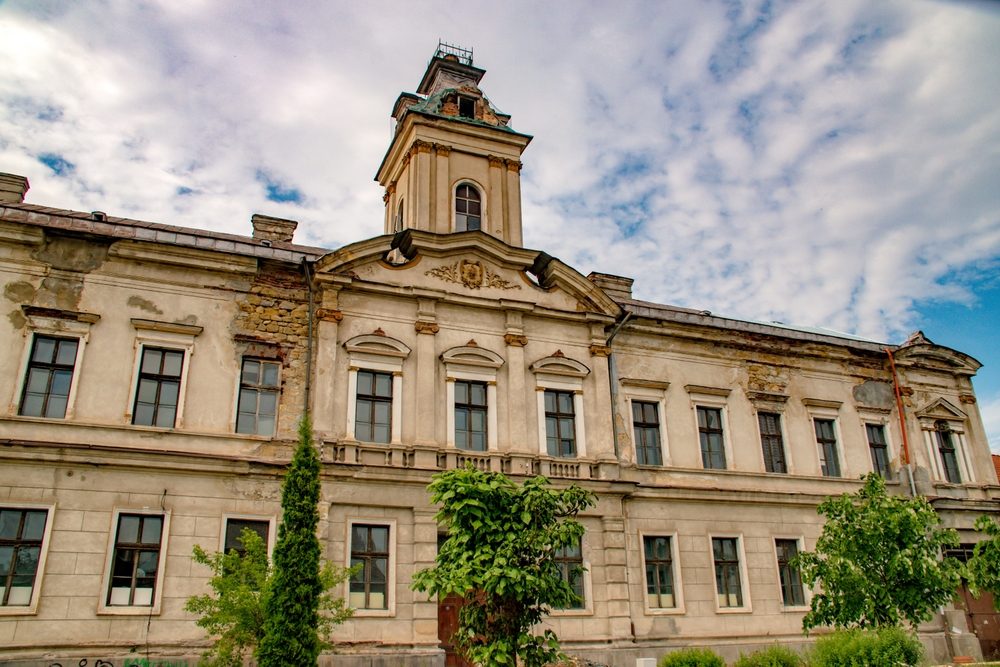
Baia Sprie is a small town with a rich history in the mining industry. Here you will discover a combination of natural landscapes and historical monuments. Set at the foot of the Gutâi Mountains, Baia Sprie offers you the chance to explore crystal-clear lakes, nature reserves and mountain trails of varying difficulty. At the same time, the historic center will enchant you with its architecture, as well as the old churches and traditional villages in the surrounding area. Here are some of the things to do in Baia Sprie:
- Participation in traditional fairs and craft fairs and festivals;
- Visiting nearby wooden churches;
- Visiting local farms – a nice activity especially for families with children;
- Mountain hiking in the Gutâi Mountains;
- Mountain biking;
- Picnic.
Passing through Baia Sprie for a few days of relaxation? See what sights you can visit to recharge your batteries.
Rooster’s Ridge
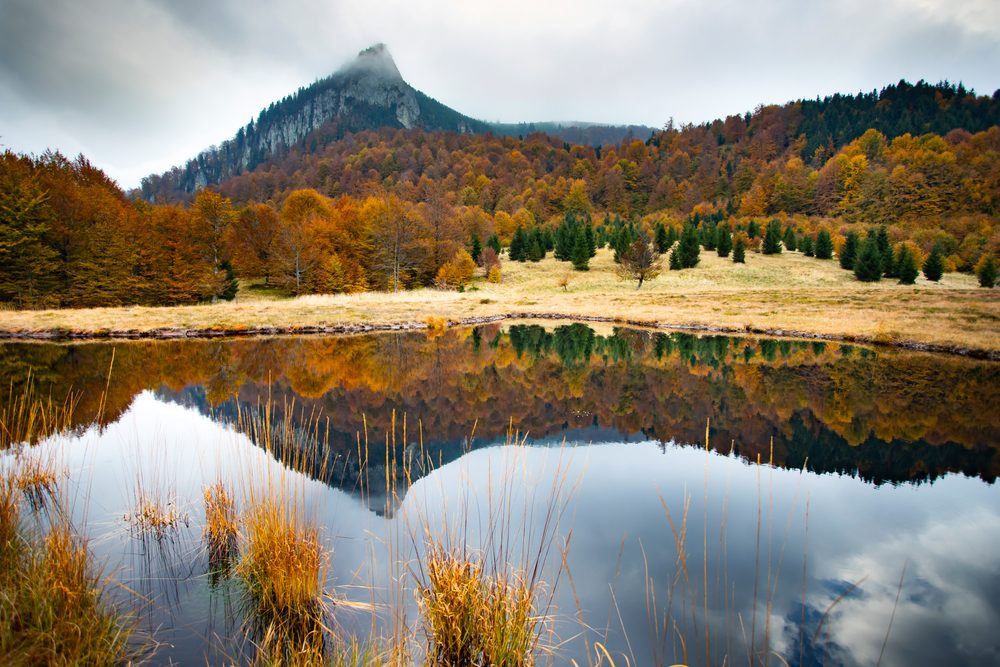
Rooster’s Ridge is a geological reserve and a protected area since 1954. This ridge is a portion of a volcanic crater and has the shape of a rooster’s crest, a sharp hill of about 200 meters with an almost vertical orientation NV-SE.
South of the main ridge are Cavnic, Baia Sprie and Baia Mare, and to the north are Tăurile Chendroaiei and Morărenilor, pre-glacial lakes at an altitude of 1,043 meters. You can reach the reserve via the Valea Șuiorului or on the national road through Baia Sprie, opposite the Pintea Viteazul inn, which is signposted. Creasta Cocoșului is about 16 km from Baia Sprie.
You can reach Baia Sprie by following the A3, DN1, DN13, DN1F, DJ108A, DJ108E, DN1C, Oborului Street, DN18, in the direction Bucharest – Ploiești – Brasov – Sighisoara – Câmpia Turzii – Gilău – Baia Mare – Baia Sprie.
The blue lake in Baia Sprie

This lake is unique in Europe and is a protected area, part of the Maramureș Mountains Natural Park. The color of the water varies depending on the season and temperature, ranging from a stunning turquoise to a deep blue. The lake is located on the site of a former mine, and the substances left over from that time, such as melanterite and iron sulphate, form these incredible hues. You can enjoy the view and a healthy walk through the forest in the fresh air. The Blue Lake is about 1.3 km from Baia Sprie.
You can reach Baia Sprie by car, following the A3, DN1, DN13, DN1F, DJ108A, DJ108E, DN1C, Strada Oborului, DN18, in the direction of Bucharest – Ploiești – Brasov – Sighisoara – Gilău – Baia Mare – Baia Sprie.
Chiuzbaia Fossiliferous Reservation
The Chiuzbaia Fossiliferous Reservation is a 59-hectare protected natural area on the southern slopes of the Igniș Peak in the Maramureș Mountains. It contains a fossil flora of 55 families, 107 genera and 240 species. The Chiuzbaia Reserve is located in an intramontane depression bordered by a rocky escarpment and is a great option if you’re a hiking and nature enthusiast. It is about 8 km from Baia Sprie.
You can reach Baia Sprie by car, following the A3, DN1, DN13, DN1F, DJ108A, DJ108E, DN1C, Oborului Street, DN18, in the direction Bucharest – Ploiești – Brașov – Gilău – Baia Mare – Baia Sprie.
Stoll’s Fountain
Stoll’s fountain is located on the south side of the Roman-Catholic Church in Baia Sprie. It is believed to have been built in the second half of the 19th century and named after the mayor of that time. The artesian fountain was repainted in 2023 in its original colors and today it is a symbol of the city. It is located about 350 meters from the center of Baia Sprie.
Baia Sprie can be reached by car, following the A3, DN1, DN13, DN1F, DJ108A, DJ108E, DN1C, Oborului Street, DN18, in the direction Bucharest – Ploiești – Gilău – Baia Mare – Baia Sprie.
Lake Bodi (Mogoșa)
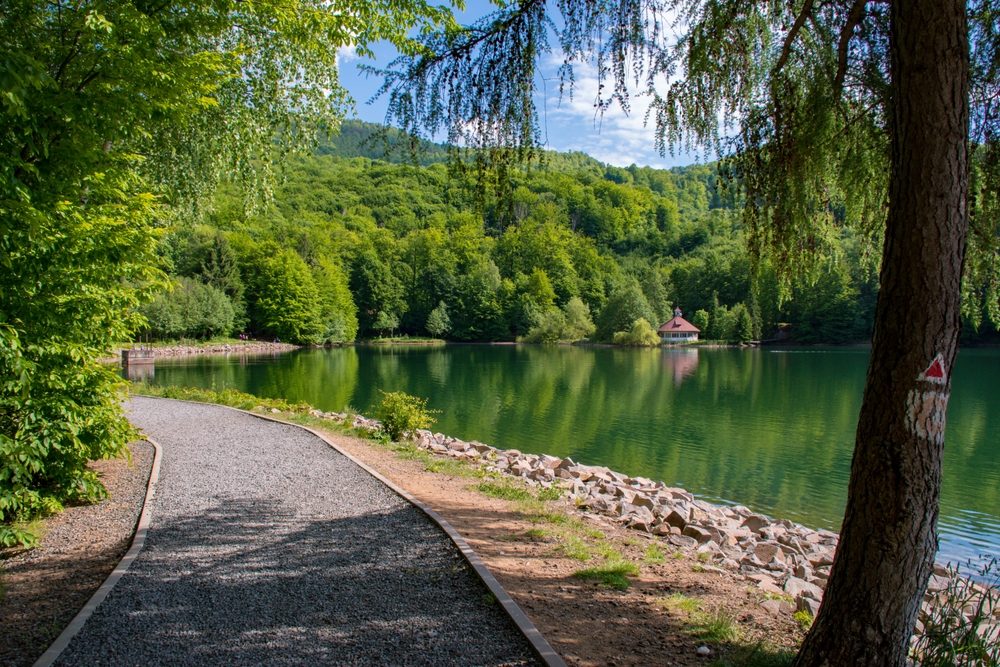
Lake Bodi (Mogoșa) is located at an altitude of over 730 meters above sea level and has an area of 4 hectares. The beautiful scenery is ideal for a hike in the area, for a swim or, why not, a run around the lake. In addition, since 2022, Lake Bodi is also open to water sports. So whether you want to hike, bike or laze in the sun, you can have it all here. It’s about 8.5 km from Baia Sprie.
You can reach Baia Sprie by car, following the A3, DN1, DN13, DN1F, DJ108A, DJ108E, DN1C, Oborului Street, DN18, in the direction Bucharest – Brasov – Sighisoara – Baia Mare – Baia Sprie.
The Olar House
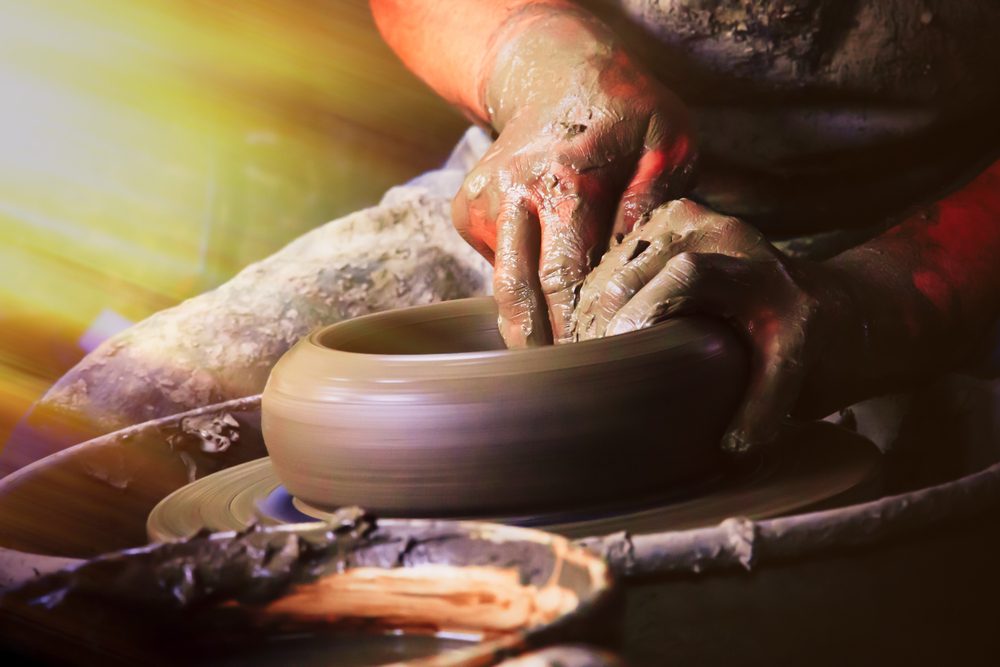
Pottery has been popular in Baia Sprie for centuries, and there has been a pottery center here since 1600. Records show that there were already 50 potters in the town in 1780. These craftsmen lived on the Rua Olarilor, where today’s Casa Olarului stands. You can visit the place to enjoy the hand-crafted pieces in geometric shapes and vegetal patterns. Casa Olarului is located 950 meters from the center of Baia Sprie, at 1 Luncii Street.
You can reach Baia Sprie quite easily by car, following the A3, DN1, DN13, DN1F, DJ108A, DJ108E, DN1C, Oborului Street, DN18, in the direction of Bucharest – Ploiești – Brasov – Gilău – Baia Sprie.
Tourist attractions in Baia Mare
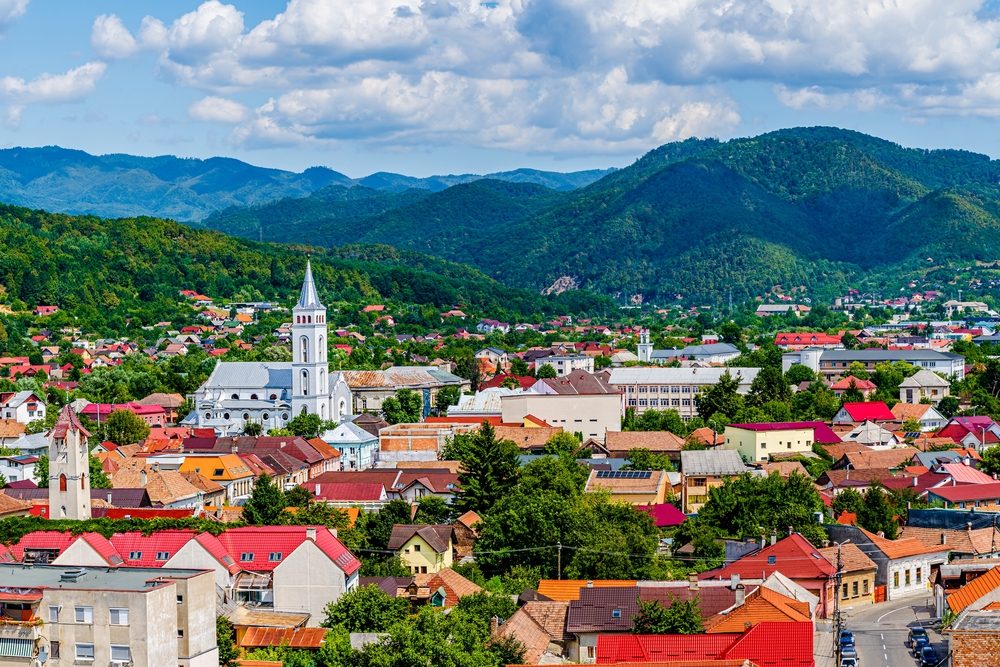
Baia Mare is the largest city in Maramureș and the county seat. In Baia Mare you can visit museums, palaces or churches, but you can also go for long walks in the nearby parks or forests. The sights in Baia Mare and its surroundings attract tourists year after year, who leave delighted by the beauty of the area. Here are some of the activities you can do in Baia Mare and the surrounding area:
- Visit Stefan cel Mare Tower – this building has an impressive history and is a symbol of the city;
- Visiting the County Art Museum – here you can admire an impressive collection of Romanian and European art;
- Attending fairs with traditional Maramureș food and products;
- The adventure park in the central park of the municipality – it is a fun opportunity especially for families with children;
- Mountain hiking in the area of Gutâi – Țibleș Mountains – if you are fond of mountain trails, you will find opportunities for physical activity close to Baia Mare;
- Theater performances;
- Festivals of music, handicrafts, opera, ballet (the best known is the International Festival of Performing Arts “Atelier”), sports competitions.
In addition to the above activities, Baia Mare has many tourist attractions worth a visit. So, what to visit in Baia Mare?
Historical center
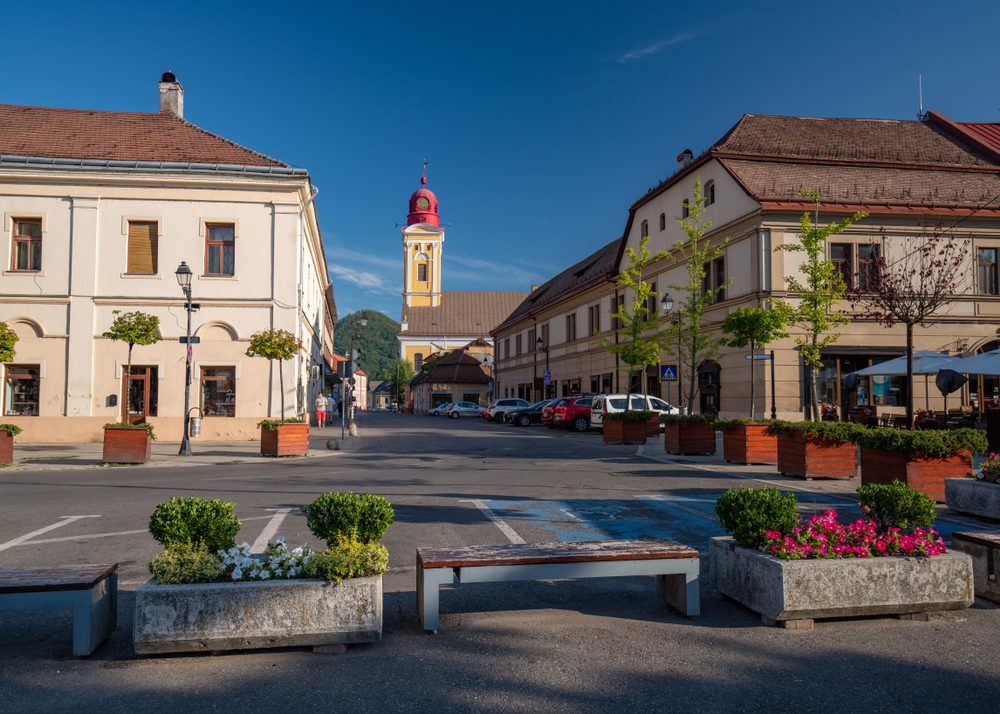
The historic city center includes several buildings of historical and architectural value, including Liberty Square, the Iancu de Hunedoara House, the Old Black Eagle Inn and the Lendvay House. Since these buildings have been restored in recent years, you can enjoy their medieval air once again.
You can reach Baia Mare by car, following the A3, DN1, DN13, DN1F, DJ108A, DJ108E, DN1C, DN18B, in the direction of Bucharest – Ploiești – Brasov – Câmpia Turzii – Gilău – Jibou – Baia Mare.
Florean Museum
The Florentine Museum is something special because it hosts an open-air exhibition of fine art. The museum contains some 10,000 pieces of contemporary art from all continents and covers 40 hectares. The exhibits are located in “Poiana Soarelui” and “Poiana la Nuci”, between Cernești and Târgu Lăpuș, about 4 km from the center of Baia Mare.
Baia Mare can be reached by car following the A3 highway, then the DN1, DN13, DN1F, DJ108A, DJ108E, DN1C and DN18B, in the direction Bucharest – Ploiești – Câmpia Turzii – Gilău – Baia Mare.
County Museum of Ethnography and Folk Art
If you are fond of traditional costumes and folk art objects, you can visit the County Museum of Ethnography and Folk Art in Baia Mare. It’s right in the city center and includes a collection of objects used over the years in the basic occupations of Maramureș. Also on display are masks, costumes worn during different customs, especially around Christmas, wooden and glass icons.
It’s easy to reach Baia Mare by car on the A3, then the DN1, DN13, DN1F, DJ108A, DJ108E, DN1C and DN18B, in the direction of Bucharest – Brasov – Câmpia Turzii – Jibou – Baia Mare.
The Mint
The Mint premises were built between 1734-1747 and had a very important role in history, namely the acquisition of precious metals, the minting and changing of metals, as well as the right to purify them. Today, the history section of the county museum is located here. It is about 650 meters from the center of Baia Mare.
You can get to Baia Mare by car, on the A3 highway, then DN1, DN13, DN1F, DJ108A, DJ108E, DN1C and DN18B, in the direction Bucharest – Ploiești – Brasov – Câmpia Turzii – Jibou – Baia Mare.
Bavna Reserve
The Bavna Reserve is a protected area with Falcife oaks, Easter flowers, maize and other local plants. If you come here in spring, you can enjoy the blooms of spotted tulips, fescue and the murmur of the Mariusa River. You can come here to enjoy the tranquility of nature, but also for a short hike.
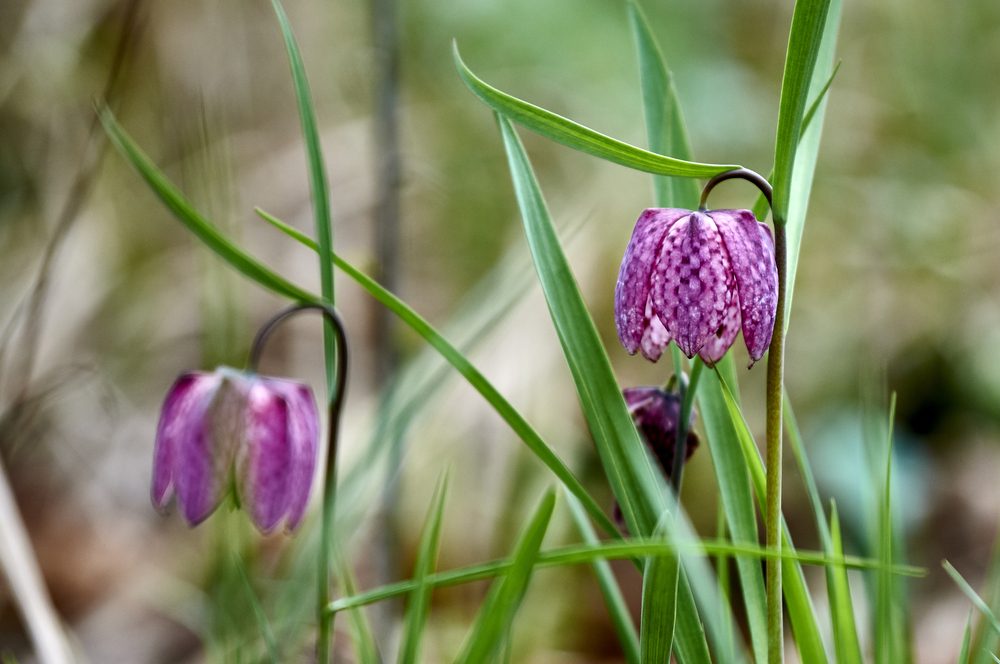
Nearby, you can visit the wooden church “Cuvioasa Paraschiva” in the village of Stejera, Teleki Castle in Satulung, Geza Teleki Castle in the village of Pribilești or spend a few moments of peace and quiet on the Someș Meadow. The Bavna Reserve is about 27 km from Baia Mare.
From Bucharest, to reach the county seat of Maramureș county, follow the A3, then DN1, DN13, DN1F, DJ108A, DJ108E, DN1C and DN18B, in the direction Bucharest – Ploiești – Brasov – Gilău – Jibou – Baia Mare.
Museum of Mineralogy
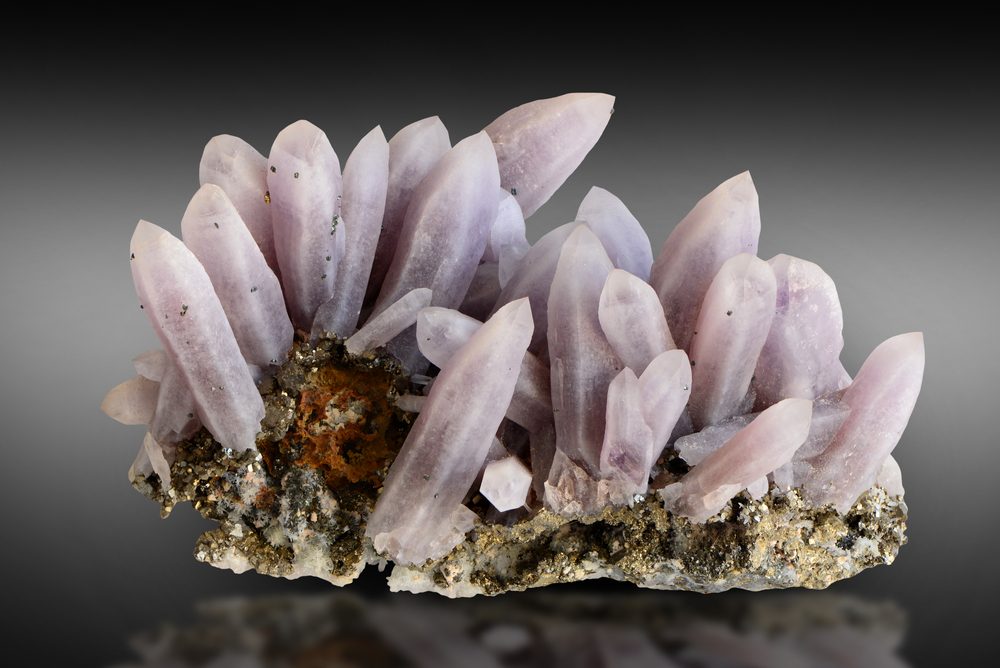
The Museum of Mineralogy in Baia Mare (the Victor Gorduza Museum, after the Romanian geologist) is the institution that holds the largest collection of mine flowers in Europe. Official data show that in 1969 the collection contained 1,502 unverified specimens. The number of specimens has continued to grow and today the museum has more than 16,00 inventoried and determined specimens. It is located about 1 mile from the city center.
You can get to Baia Mare by car by taking the A3, then the DN1, DN13, DN1F, DJ108A, DJ108E, DN1C and DN18B, in the direction of Bucharest – Ploiești – Câmpia Turzii – Gilău – Baia Mare.
Tourist attractions in Izei Valley

The Izei Valley, near Vadu izei, offers a complete experience if you are a nature and history lover. Besides traditional villages and wooden churches, you can discover spectacular mountain trails and nature reserves. Whatever the season, the Izei Valley welcomes you with open arms. Here are some of the activities you can do in the Izei Valley region:
- Exploring traditional villages – the villages of Rozavlea and Poienile Izei contain carved wooden houses, wooden gates and craft workshops;
- Mountain hiking – you’ll find mountain trails of varying levels of experience. You can choose short and easy trails, perfect for families with children, or longer and demanding trails if you are in very good physical condition;
- Participate in folklore festivals, local food and produce fairs, local Christmas or Easter traditions;
- Relaxing at a traditional guesthouse – if you stay at a guesthouse in Maramureș, you will enjoy the hospitality of the locals and the recipes handed down from generation to generation;
- Observing flora and fauna – the izei Valley is an area rich in biodiversity, so you can observe plants, birds or mammals;
- Landscape photography, traditional villages and wooden churches.
For an authentic experience away from the hustle and bustle of the city, the Izei Valley could be the perfect place for you. Here are some of the sights to visit in the Izei Valley.
Mineral springs Botiza

Baths have been built around the Botiza mineral springs to treat various rheumatic and other ailments; the baths can also be used for relaxation after a stressful period. Both ferruginous and sulphurous waters are found here. Of the seven mineral springs in the area, only two are exploited and easily accessible. Botiza is about 35 km from Vadu Izei.
To get to Vadu Izei, take the A3 highway from Bucharest, then the DN1, DN13, DN15, DJ154J, DN15A, DN17, DN17C and DJ186, in the direction of Bucharest – Ploiești – Brasov – Targu Mures – Reghin – Telciu – Bârsana – Vadu Izei.
Oncești Fortress
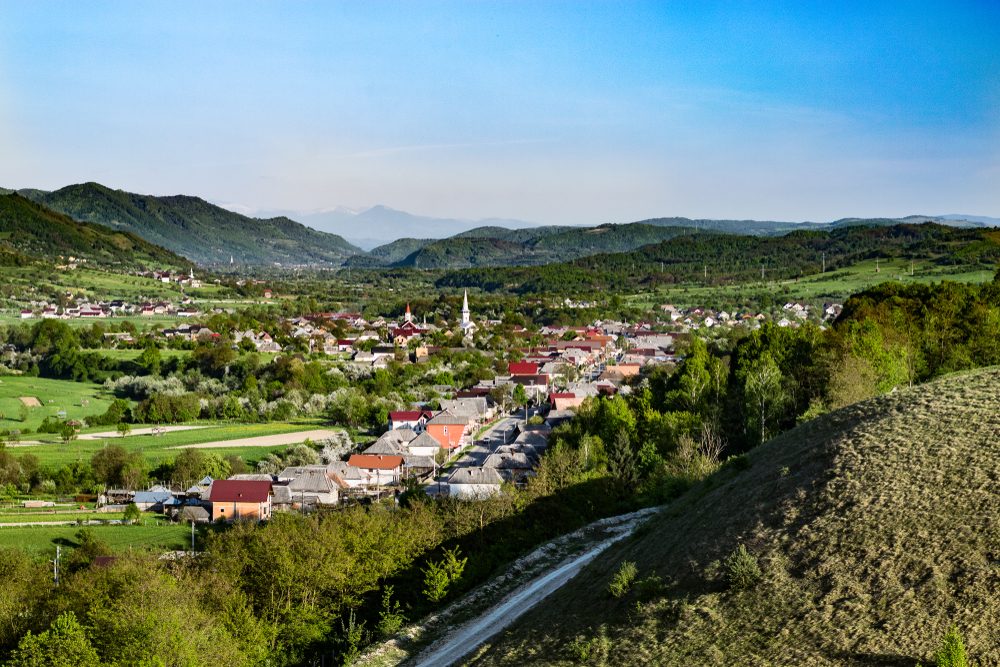
Oncești is believed to be the first Dacian fortress in the Maramureș area. Archaeological work is ongoing and new ancient artifacts are expected to be discovered. Nearby you can admire the remains in volcanic tufa, the grotto, as well as Maramureș-style houses, stables and stables. You can come on foot from Vadu Izei (about 10 km away) on a marked trail of medium difficulty.
To get to Vadu Izei, take the A3, then the DN1, DN13, DN15, DJ154J, DJ154A, DN15A, DN17, DN17C and DJ186, in the direction of Bucharest – Ploiești – Târgu Mureș – Telciu – Bârsana – Vadu Izei.
Monastery of Bârsana
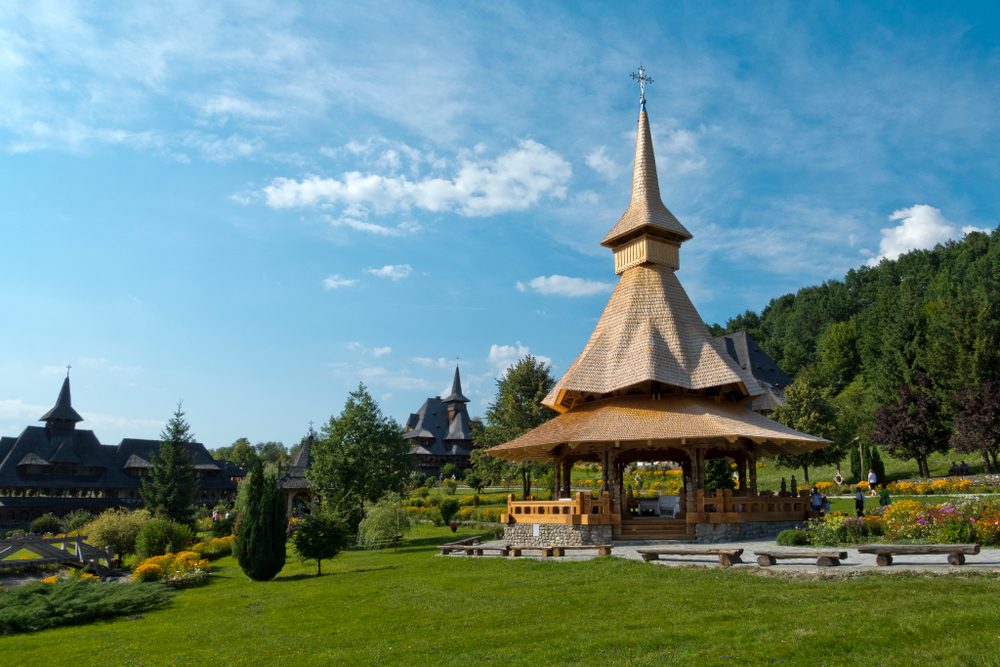
The Bârsana Monastery is a place of peace and silence, as well as a representative monument of the wooden churches of Maramureș, being protected under the aegis of UNESCO. It is one of the tallest wooden buildings in Romania, 57 meters high. The monastery complex consists of the carved gate, the bell tower, the church, the summer altar, the artists’ house and a museum containing manuscripts and religious books from the 16th-19th centuries and local folk art objects. The monastery is 18.5 km from Vadu Izei.
You can reach Bârsana by car, on the A3, then DN1, DN13, DN15, DJ154J, DJ154J, DN15A, DN17, DN17C, DJ186, in the direction Bucharest – Ploiești – Brasov – Reghin – Bârsana.
Why is so special Enterprise Rent-A-Car?
Renting a car to get to Maramureș can be a great choice, whether your personal car is in for a service, you’re traveling on business and have a few days off in Maramureș or you simply want a car you can rely on. Here’s why you should choose Enterprise Rent-A-Car as your vacation partner:
- We support and value every customer – employees listen to customer wishes and adapt to provide you with the best quality service;
- Prioritize qualities such as honesty, integrity and respect in dealing with both customers and employees;
- Support the development and strengthening of communities;
- We strive for a long-term relationship for meeting transportation needs and earning trust for our top-notch service.
Maramureș is a destination that captivates you with its authenticity, tradition and breathtaking natural landscapes. A road trip through this region is a journey through time and space, an unforgettable experience. Whichever sights in Maramureș you choose to visit, the area will give you what you want for your vacation.
Surse foto: Shutterstock 1, Shutterstock 2, Shutterstock 3, Shutterstock 4, Shutterstock 5, Shutterstock 6, Shutterstock 7, Shutterstock 8, Shutterstock 9, Shutterstock 10, Shutterstock 11, Shutterstock 12, Shutterstock 13, Shutterstock 14, Shutterstock 15, Shutterstock 16, Shutterstock 17, Shutterstock 18, Shutterstock 19, Shutterstock 20, Shutterstock 21, Shutterstock 22, Shutterstock 23, Shutterstock 24, Shutterstock 25, Shutterstock 26, Shutterstock 27, Shutterstock 28, Shutterstock 29, Shutterstock 30, Shutterstock 31, Shutterstock 32, Shutterstock 33, Shutterstock 34, Shutterstock 35, Shutterstock 36, Shutterstock 37, Shutterstock 38, Shutterstock 39, Shutterstock 40, Shutterstock 41, Shutterstock 42, Shutterstock 43.

